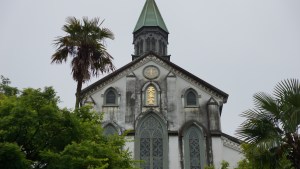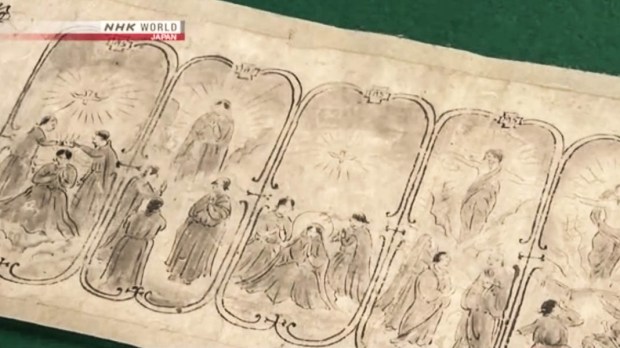A Japanese museum has discovered a scroll believed to have originated from the earliest days of Christianity in Japan. Measuring 10.5 feet long and a little more than 9 inches wide, the scroll is adorned with 15 scenes from the life of Jesus Christ and the Virgin Mary, including the Annunciation, Pentecost, and Christ’s Passion.
The images also include religious figures wearing traditional Japanese garb, and Latin prayers are written in phonetic Japanese characters. The scroll was found in the collection of the SawadaMiki Kinenkan Museum in the town of Oiso, near Tokyo, which is in possession of many artifacts related to early Japanese Christianity.
The Japanese newspaper The Mainichi reports that one of the inscriptions says, “1592 years since His Birth.” Historians believe this is perhaps the date it was created and carbon dating supports this hypothesis, showing it was created before 1633.
If the dating is accurate then this scroll was drawn in the decades following the arrival of St. Francis Xavier in Japan in 1549. Xavier and his missionaries were in large part responsible for the spread of Christianity through the island of Japan, and in some instances converted entire provinces to Christianity.
CNA notes that by the 1580s there were more than 200,000 Christians in Japan, but in 1588 Emperor Cambacundono commanded all Jesuits to leave the country. He gave them six months to leave before they would be killed. Christians who remained in the country were harshly persecuted and subjected to tortures unless they renounced their faith. If Christians held fast in their faith, they were put to death.

Read more:
Sites of Japan’s persecuted Christians added to UNESCO World Heritage list
In 1612 the Christian faith was formally denounced by the government and every Christian artifact authorities could find was destroyed, making this scroll particularly rare.
Osamu Inoue, head of the Yokohama History Museum, believes the pictures were made because of the rapid spread of the faith:
“Ordinary people perhaps drew such pictures on papers because the material was inexpensive and (authentic) religious items were in short supply due to a rapid growth of the follower population,” he told The Mainichi.
Citizens of Japan were finally given freedom of religion in 1871, but in the 250 years prior the Church’s faithful were in hiding. There is no telling how many more early Japanese Christian artifacts remain hidden among museum collections and family heirlooms.
The scroll has been put on display at the SawadaMiki Kinenkan Museum.

